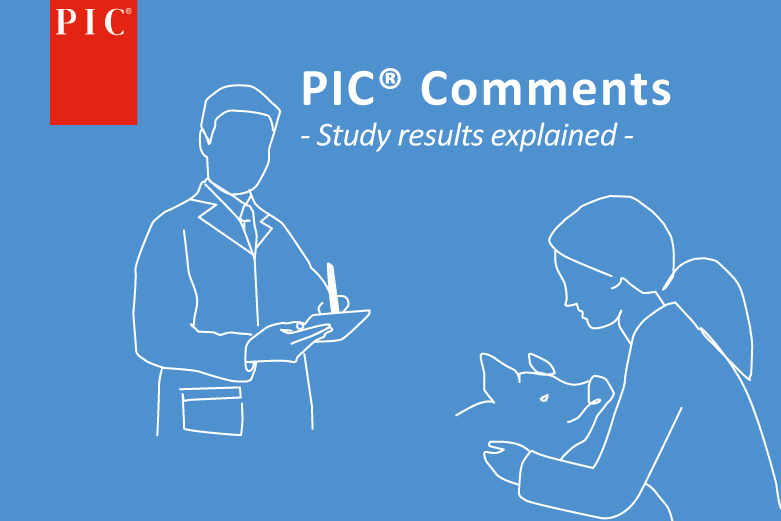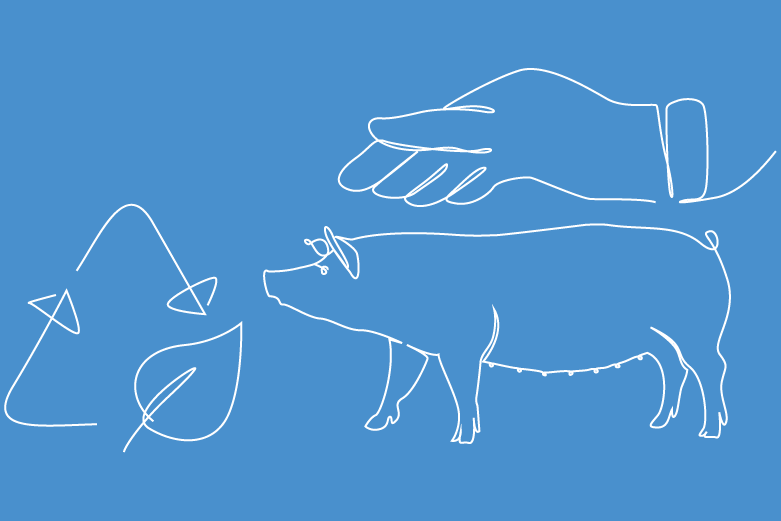“PIC believes that one of the most important things that can be done to improve the sustainability of protein production is to raise the right animal, one that is healthy, robust and efficient. Genetic sustainability offers unique opportunities because it mitigates emissions rather than sequestering them and is effective regardless of geographic location,” says Banks Baker, global director, product sustainability for PIC.
When it comes to valuing innovation such as genetic improvement, one of the most important steps you can take is to complete a life cycle assessment (LCA), explains Chris Hostetler, director of animal science at the National Pork Board.
LCAs verify the environmental impact data is defensible, Hostetler says, so you don’t have a situation where an innovation is accused of greenwashing. LCAs allow you to test and verify the entire system to determine if carbon equivalents were, in fact, generated.
“It’s very critical that an LCA be conducted for any innovation that would be coming into the market in terms of a carbon asset,” he adds. “I cannot tell you if I can fit a metric ton of carbon equivalents in my front pocket. Carbon is not visible. So, the data is where the reliability of those claims comes from. For me, being able to collect the data accurately, and in a defensible manner, is critical to ensuring that the carbon assets are what they say they are.”
That’s a gap that PIC has been working to address.
What’s The Benefit Of Genetic Improvement?
PIC is in the process of wrapping up LCAs to quantify the environmental benefits that can be achieved through the use of PIC’s genetic improvements, including those achieved through gene editing. The company saw an opportunity for the entire industry to potentially monetize genetic improvements because healthier, more robust pigs are more feed efficient and create less waste.
For PIC, LCAs allow them to compare how their full-line PIC genetics compare to the industry average. Highly respected LCA modeler Greg Thoma is serving as the lead principal investigator for PIC, looking at the impact of genetic improvements in North America, Europe and Asia.
“He’s running independent LCAs that allow us to understand specifically what the impact of our genetics are comparable to the industry averages in those countries. He’s running a separate LCA on the impact of PRRS and with our PRRS-resistant pig, isolating the impact of what that product would do for the environment,” says Banks Baker, global director, product sustainability for PIC.
PIC received International Organization of Standardization (ISO) conformance for its North American LCA in February. The LCA shows that in North America, a full program PIC animal delivers a 7.5% reduction in greenhouse gas emissions compared to the industry average, Baker says.
“Essentially, what that’s saying is, we’re taking the production efficiencies achieved through using a full-program PIC animal and we’re expressing those as an environmental benefit. For a downstream corporation that uses a national emissions factor that says this is the amount of greenhouse gas emissions per pound of pork, if that system utilized a PIC full-program animal, it would have a 7.5% reduced greenhouse gas emissions comparable to that average,” Baker explains.
Although that’s great news, what he’s most excited about is that this LCA is one of the first to experience that level of validation to quantify the impact of genetics on environmental outcomes.
There’s a lot of people making bold, ambitious commitments. A recent lawsuit says that is not enough, you need to go further now. We’re starting to see a huge increase in greenwashing claims. We’re not interested in being general, we’re interested in doing this 100% correctly.
Banks Baker, global director, product sustainability for PIC.
That’s why PIC’s LCA is going through such rigorous due diligence, including plans to submit each LCA for academic peer review. “There is no doubt that this space is going to have scrutiny” Baker adds.
“We’re talking about creating some type of carbon value that is transferable,” Baker says. “There’s something tangible to that, and especially in a space that’s so immature, we need to make sure that that’s real.”
What Is The Cost Of Disease?
Not only are there a number of diseases that affect pig production, but there are a number of welfare issues and management practices that affect pig production, too. One of the diseases that weighs on the minds of pork producers across the country is porcine reproductive and respiratory syndrome (PRRS).
“PRRS is devastating disease. It is a costly disease that’s a huge drag on our efficiency,” Hostetler says. “Efficiency, whether that’s feed efficiency or efficiency of throughput of animals, is really at the heart of sustainability. Improvements in efficiency through mitigation of the impact of disease has a great potential for conveying a carbon asset.”
PIC is currently conducting an LCA on its gene edited PRRS-Resistant Pig genetics and the resulting reduction that can be claimed.
“PIC believes that one of the most important things that can be done to improve the sustainability of protein production is to raise the right animal, one that is healthy, robust and efficient,” says Baker. “Genetic sustainability offers unique opportunities because it mitigates emissions rather than sequestering them and is effective regardless of geographic location.”
PIC expects the results to be coming soon on the PRRS-Resistant Pig LCA.
A Sustainable Pathway
Because animal genetics have never been utilized or invested in this way, PIC is collaborating across the pork value chain to ensure a credible standard is established that allows genetic benefits to be understood, shared and claimed.
“If the gene edit for PRRS becomes commercially available, there will be other gene edits that become commercially available down the road, whether that’s for pig health issues or a practice that reduces painful procedures,” Hostetler says.
This effort could serve as a roadmap for other gene edit innovations to come to the market as well, Hostetler says.
“Some of the strongest programs we’re seeing incorporate sustainability around greenhouse gas reductions. If we can show that genetic improvements can support that, including those that can be achieved through gene editing, it allows for a better platform for market acceptance,” Baker says. “It shows we’re creating a shared value that goes further than just a producer and allows everybody to share in that win.”
This article was originally published at www.porkbusiness, author Jennifer Shike, 2024-04-24: Data Makes the Difference: PIC Seeks Answers to Environmental Impact of Genetics | Pork Business




